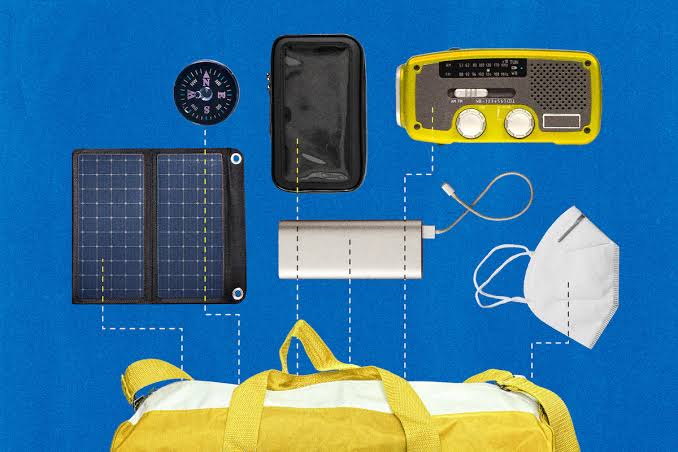Smartwatch technology has evolved from being a simple digital timepiece to a multi-functional device that integrates health monitoring, communication, and productivity tools. By 2025, smartwatches have become an essential part of everyday life, merging fashion with advanced technology to create wearables that are as stylish as they are powerful. These devices are no longer just companions to smartphones but have developed into independent gadgets with capabilities that rival other personal tech products.
The future of smartwatches is being shaped by advancements in artificial intelligence, biometric sensors, connectivity, and design. As consumer demands continue to grow, manufacturers are focusing on innovation that improves convenience, health tracking, and integration with smart ecosystems.
Evolution of Smartwatch Technology
The first wave of smartwatches focused on basic functions like displaying notifications and tracking steps. Over time, companies like Apple, Samsung, and Garmin have introduced advanced features, including fitness tracking, mobile payments, GPS navigation, and third-party app integration.
By 2025, smartwatches have evolved into sophisticated health companions and productivity tools. They now support advanced diagnostics, improved battery life, and seamless connectivity with various devices, including smart home systems and IoT-enabled products.
Health and Wellness Innovations
Health tracking remains one of the primary drivers of smartwatch technology. Modern smartwatches are equipped with sensors that can monitor heart rate, blood oxygen levels, sleep patterns, stress, and even detect irregular heart rhythms.
Future smartwatches are expected to integrate more advanced health monitoring features, such as non-invasive glucose tracking, hydration level measurement, and early detection of medical conditions through AI-driven analysis of biometric data. These advancements are turning smartwatches into personal health assistants that can provide real-time health insights.
Enhanced Connectivity and Independence
One of the significant shifts in smartwatch technology has been the move toward independence from smartphones. With built-in LTE and 5G connectivity, smartwatches can now make calls, send messages, and stream content without relying on a paired device.
As the future unfolds, smartwatches will become even more capable of functioning as standalone devices. This independence will extend to features like cloud storage access, voice-controlled smart assistants, and seamless integration with wearable AR or VR devices.
Integration of Artificial Intelligence
AI plays a crucial role in the evolution of smartwatches. AI-powered assistants can learn from user behavior to provide personalized recommendations, fitness coaching, and predictive notifications.
In the future, smartwatches will use machine learning algorithms to analyze health data, suggest lifestyle improvements, and even detect potential health risks before symptoms appear. The combination of AI with advanced sensors will make these devices smarter and more proactive.
Design and Display Improvements
Smartwatch design has also seen remarkable improvements. Manufacturers are focusing on creating thinner, lighter, and more stylish models without compromising performance. Flexible OLED displays, durable materials, and customizable watch faces allow users to personalize their devices.
Future advancements may include fully foldable displays, solar-powered charging, and modular designs that let users upgrade certain components instead of replacing the entire watch.
Extended Battery Life
Battery life has been a persistent challenge for smartwatch manufacturers. However, by 2025, significant progress has been made with more efficient processors, energy-saving displays, and solar or kinetic charging options.
Future smartwatches are likely to feature ultra-long battery life, lasting several days or even weeks on a single charge, thanks to innovations in energy storage and power management.
Smart Ecosystem Integration
Smartwatches are becoming central hubs for managing connected devices. They allow users to control smart home systems, cars, and other IoT devices directly from their wrist. This ecosystem integration creates a seamless digital experience across all aspects of daily life.
In the coming years, smartwatches will become even more interconnected, acting as control centers for smart glasses, fitness equipment, and wearable medical devices.
Future Potential of Smartwatch Technology
The future of smartwatch technology points toward even greater innovation, with features such as augmented reality overlays, gesture-based controls, and advanced biometric authentication like vein pattern recognition.
There is also growing interest in the use of eco-friendly materials and sustainable production methods for smartwatch manufacturing, aligning with global efforts to reduce electronic waste and promote environmental responsibility.
Conclusion
The future of smartwatch technology and features is promising, with ongoing advancements in AI, health tracking, connectivity, and design shaping the next generation of wearables. By 2025 and beyond, smartwatches will become even more versatile, functioning not only as health companions but also as key tools for communication, productivity, and entertainment.
As innovation continues, these devices will play an increasingly central role in everyday life, blending style, convenience, and cutting-edge technology to create smarter and more personalized experiences.



